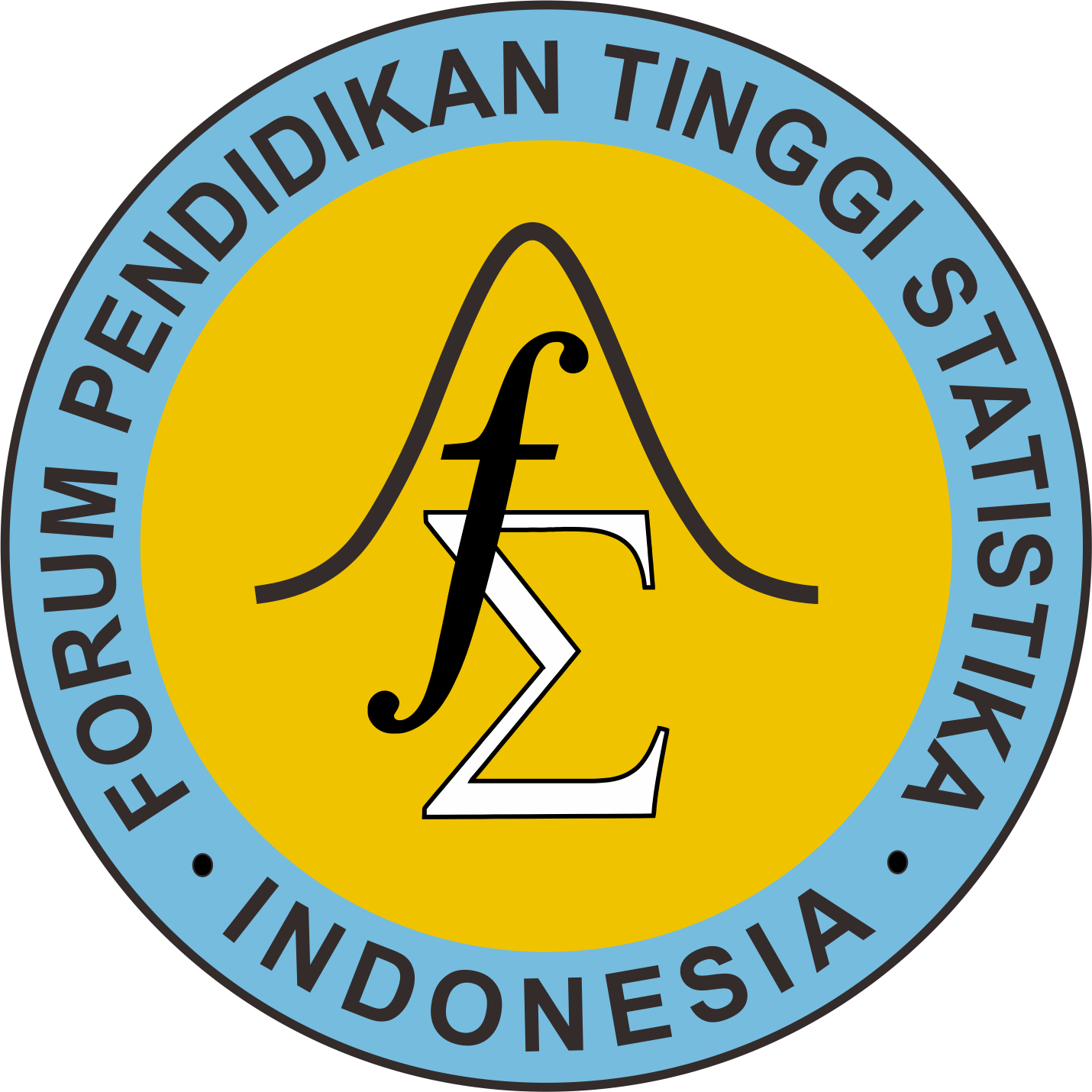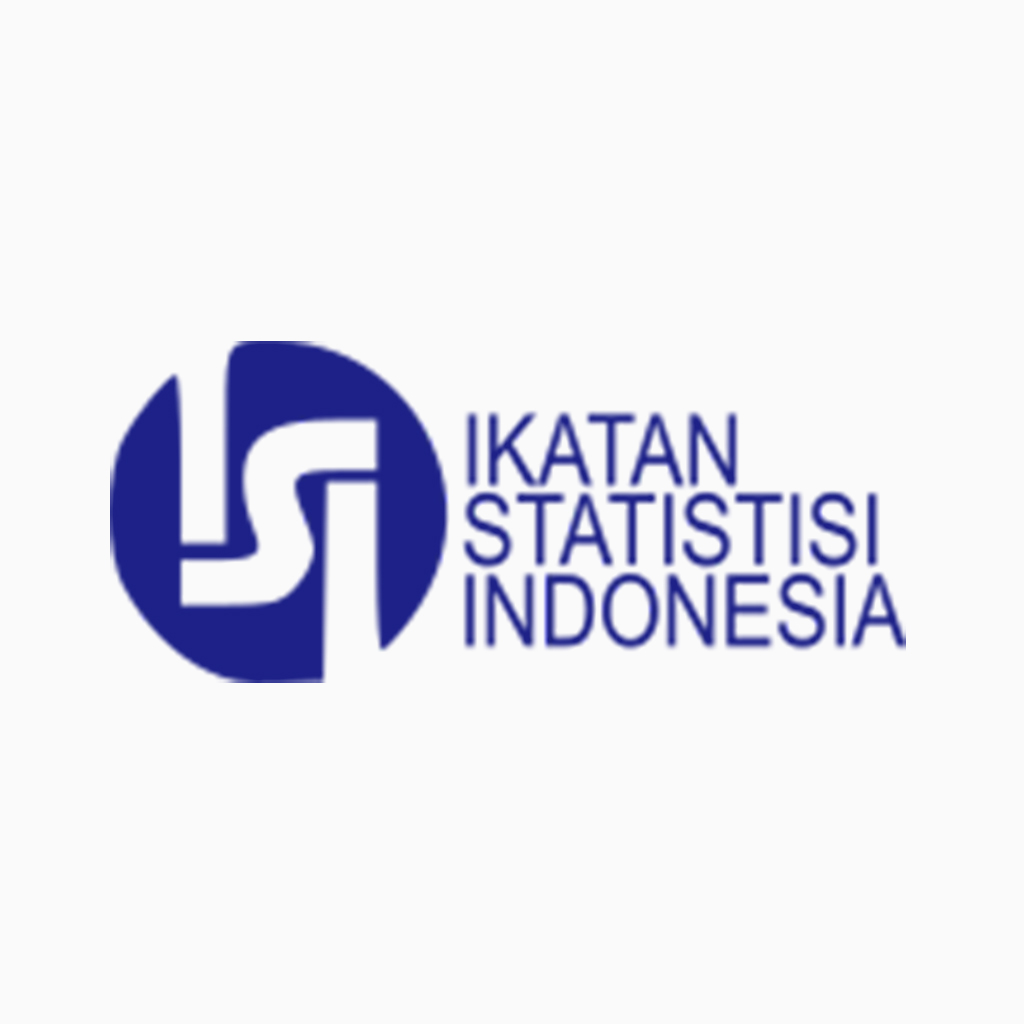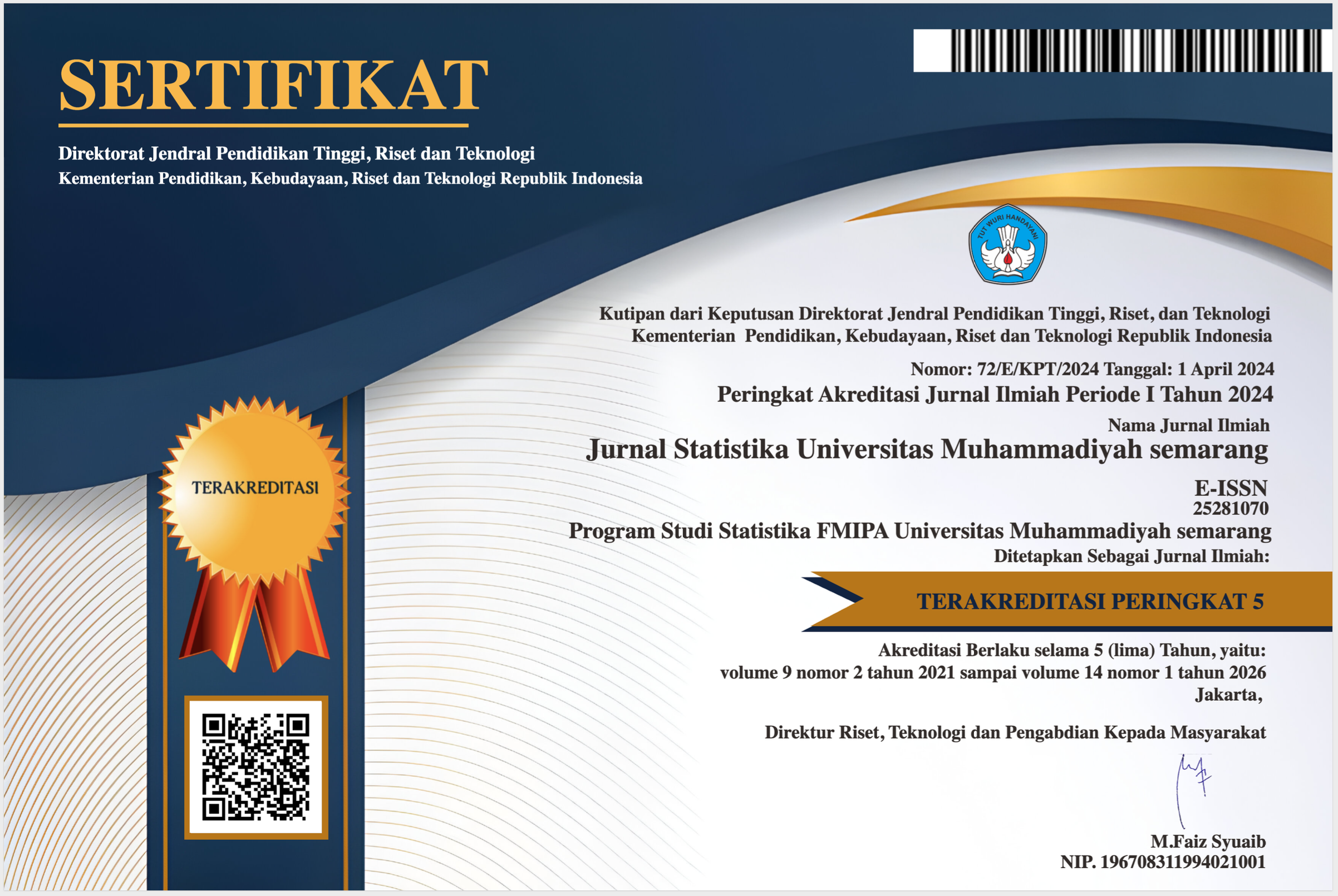FORECASTING THE OCCUPANCY RATE OF STAR HOTELS IN BALI USING THE XGBOOST AND SVR METHODS
(1) Data Science, Faculty of Computer Science, UPNVJT
(2) Data Science, Faculty of Computer Science, UPNVJT
(3) Data Science, Faculty of Computer Science, UPNVJT
(*) Corresponding Author
Abstract
Keywords
Full Text:
PDFReferences
N. AISHAH, D. DEVIANTO, and M. MAIYASTRI, “PEMODELAN JUMLAH KUNJUNGAN WISATAWAN MANCANEGARA KE INDONESIA MELAUI BANDARA NGURAH RAI BALI DENGAN MODEL SARIMA-ARCH,” Jurnal Matematika UNAND, vol. 10, no. 3, p. 248, Jul. 2021, doi: 10.25077/jmu.10.3.248-259.2021.
B. G. Prianda and E. Widodo, “PERBANDINGAN METODE SEASONAL ARIMA DAN EXTREME LEARNING MACHINE PADA PERAMALAN JUMLAH WISATAWAN MANCANEGARA KE BALI,” BAREKENG: Jurnal Ilmu Matematika dan Terapan, vol. 15, no. 4, pp. 639–650, Dec. 2021, doi: 10.30598/barekengvol15iss4pp639-650.
N. U. Clarissa, W. Sulandari, and R. Respatiwulan, “Peramalan jumlah kedatangan wisatawan mancanegara ke bali menggunakan metode hibrida SSA-WFTS,” Jurnal Ilmiah Matematika, vol. 8, no. 1, p. 19, Apr. 2021, doi: 10.26555/konvergensi.v8i1.21460.
H. Christian Anderson Wint, A. Irma Purnama, and T. Suprapti, “PREDIKSI HUNIAN HOTEL MENGGUNAKAN ALGORITMA K-NEAREST NEIGHBORS (STUDI KASUS : HOTEL RUMAH KITA KOTA CIREBON),” 2024.
R. N. Darmawan, J. C. A. Wijaya, and A. P. Putra, “Peramalan Tingkat Penghunian Kamar (TPK) pada Hotel Berbintang di Banyuwangi dengan Metode Naive dan Decomposition,” G-Tech: Jurnal Teknologi Terapan, vol. 8, no. 1, pp. 114–124, Dec. 2023, doi: 10.33379/gtech.v8i1.3543.
J. Dwi Putra Tamasoleng, I. Bagus Ary Indra Iswara, J. Tukad Pakerisan No, and P. Denpasar Selatan, “Analisis Perbandingan Metode Triple Exponential Smoothing dan Metode Winter Untuk Peramalan Tingkat Hunian Hotel Aston Denpasar,” Jurnal Nasional Komputasi dan Teknologi Informasi, vol. 3, no. 1, 2020.
L. Zhang, W. Bian, W. Qu, L. Tuo, and Y. Wang, “Time series forecast of sales volume based on XGBoost,” in Journal of Physics: Conference Series, IOP Publishing Ltd, Apr. 2021. doi: 10.1088/1742-6596/1873/1/012067.
F. Yulianto, W. Firdaus Mahmudy, and A. A. Soebroto, “Comparison of Regression, Support Vector Regression (SVR), and SVR-Particle Swarm Optimization (PSO) for Rainfall Forecasting,” 2020. [Online]. Available: www.jitecs.ub.ac.id
C. X. Lv, S. Y. An, B. J. Qiao, and W. Wu, “Time series analysis of hemorrhagic fever with renal syndrome in mainland China by using an XGBoost forecasting model,” BMC Infect Dis, vol. 21, no. 1, Dec. 2021, doi: 10.1186/s12879-021-06503-y.
Md. S. Rahman, A. H. Chowdhury, and M. Amrin, “Accuracy comparison of ARIMA and XGBoost forecasting models in predicting the incidence of COVID-19 in Bangladesh,” PLOS Global Public Health, vol. 2, no. 5, p. e0000495, May 2022, doi: 10.1371/journal.pgph.0000495.
H. Oukhouya and K. El Himdi, “Comparing Machine Learning Methods—SVR, XGBoost, LSTM, and MLP— For Forecasting the Moroccan Stock Market,” MDPI AG, Jun. 2023, p. 39. doi: 10.3390/iocma2023-14409.
D. Indra Purnama and S. Setianingsih, “Support Vector Regression (SVR) Model for Forecasting Number of Passengers on Domestic Flights at Sultan Hasanudin Airport Makassar Model Support Vector Regression (SVR) untuk Peramalan Jumlah Penumpang Penerbangan Domestik di Bandara Sultan Hasanudin Makassar,” vol. 16, no. 3, pp. 391–403, 2020, doi: 10.20956/jmsk.v%vi%i.9176.
I. Nengah Dharma Pradnyandita and A. A. Rohmawati, “Electronic Money Transactions Forecasting with Support Vector Regression (SVR) and Vector Autoregressive Moving Average (VARMA),” Intl. Journal on ICT, vol. 8, no. 1, pp. 69–85, 2022, doi: 10.21108/ijoict.v8i1.632.
Z. Meng, H. Sun, and X. Wang, “Forecasting Energy Consumption Based on SVR and Markov Model: A Case Study of China,” Front Environ Sci, vol. 10, Apr. 2022, doi: 10.3389/fenvs.2022.883711.
L. Rubio and K. Alba, “Forecasting Selected Colombian Shares Using a Hybrid ARIMA-SVR Model,” Mathematics, vol. 10, no. 13, Jul. 2022, doi: 10.3390/math10132181.
T. Trimono, A. Sonhaji, and U. Mukhaiyar, “FORECASTING FARMER EXCHANGE RATE IN CENTRAL JAVA PROVINCE USING VECTOR INTEGRATED MOVING AVERAGE,” MEDIA STATISTIKA, vol. 13, no. 2, pp. 182–193, Dec. 2020, doi: 10.14710/medstat.13.2.182-193.
Article Metrics
Abstract view : 746 timesPDF - 301 times
DOI: https://doi.org/10.26714/jsunimus.12.1.2024.24-33
Refbacks
- There are currently no refbacks.
Copyright (c) 2024 Jurnal Statistika Universitas Muhammadiyah Semarang
Editorial Office:
Department of Statistics
Faculty Of Mathematics And Natural Sciences
Universitas Muhammadiyah Semarang
Jl. Kedungmundu No. 18 Semarang Indonesia
Published by:
Department of Statistics Universitas Muhammadiyah Semarang
This work is licensed under a Creative Commons Attribution 4.0 International License








2.png)



